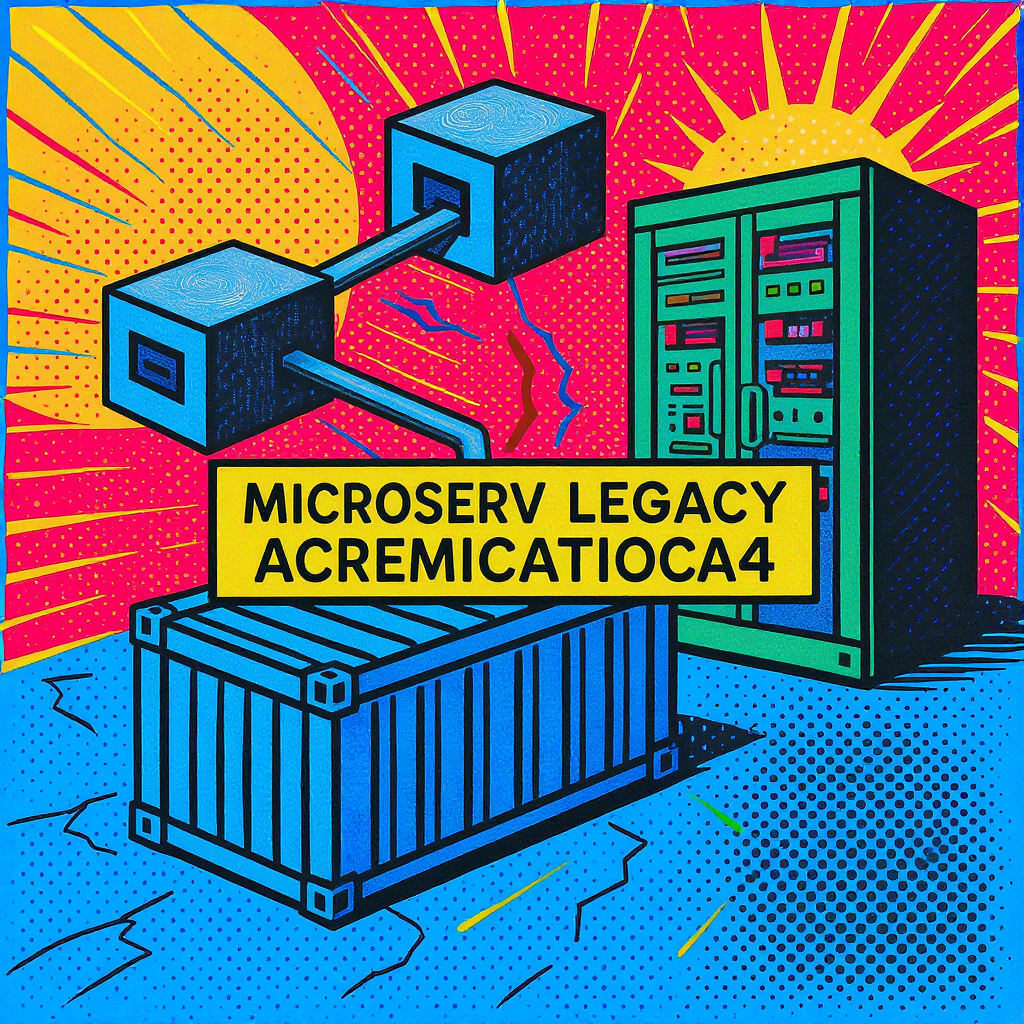Many organizations grapple with the challenge of maintaining and evolving legacy applications. These monolithic systems, often built decades ago, can become increasingly difficult and costly to update, scale, and adapt to modern business needs. This article explores a powerful solution: modernizing legacy applications using microservices architecture and containerization. We will examine the benefits of this approach, the steps involved in migrating to a microservices-based system, the role of container orchestration platforms like Kubernetes, and address potential challenges throughout the modernization process. We’ll also look at the impact on SEO and how to adapt your digital strategy during this transformative phase. The journey from monolithic architecture to a distributed microservices environment requires careful planning, execution, and a deep understanding of both legacy systems and modern cloud-native technologies. Let’s delve into the details.
Deconstructing the Monolith: the Microservices Approach
The core of legacy modernization lies in breaking down the monolithic application into smaller, independent services. Microservices are self-contained units of functionality, each responsible for a specific business capability. This contrasts sharply with the monolithic approach where all functionalities are tightly coupled within a single application. By decomposing the monolith, teams can work on individual services independently, leading to faster development cycles, improved scalability, and easier maintenance. Each microservice can be written in different programming languages and deployed independently, enhancing flexibility and reducing the risk of cascading failures. The key is to identify clear boundaries between services, ensuring loose coupling and efficient communication between them.
Containerization: Packaging for Portability and Scalability
Once the legacy application is decomposed into microservices, containerization becomes crucial. Containers package each microservice along with its dependencies (libraries, runtime, settings etc.) into an isolated environment. This ensures consistent execution across different development, testing, and production environments. Docker is a leading containerization technology enabling developers to create, deploy, and manage containers easily. Containerization significantly improves portability, enabling easy deployment across on-premises infrastructure, virtual machines, and cloud platforms. It also simplifies the deployment pipeline, accelerating the release of new features and updates.
Orchestration with Kubernetes: Managing a Swarm of Containers
As the number of microservices and containers grows, manual management becomes unwieldy. This is where container orchestration platforms, such as Kubernetes, come into play. Kubernetes automates the deployment, scaling, and management of containerized applications. It handles tasks such as scheduling containers across a cluster of machines, ensuring high availability and automatic recovery from failures. Kubernetes also provides features for service discovery, load balancing, and health checks, further streamlining the management of a microservices-based system. Implementing Kubernetes requires a specialized skill set, but its benefits in terms of scalability, resilience, and operational efficiency are substantial.
SEO Considerations During Modernization
Modernizing a legacy application is not just a technical undertaking; it also impacts your website’s SEO. Changes to the site’s architecture, URLs, and content can affect search engine rankings. Careful planning is crucial to minimize disruption. This includes:
- Implementing 301 redirects to preserve existing backlinks.
- Regularly monitoring your website’s performance using tools like Google Search Console.
- Ensuring your site remains accessible and fast for search engines during and after migration.
It’s also beneficial to review and update content to maintain relevance and improve user experience. A well-planned SEO strategy is paramount to avoid negative impacts on organic traffic.
Challenges and Mitigation Strategies
While the benefits of microservices and containers are undeniable, the modernization journey presents challenges. These include the initial investment in new infrastructure, training, and tooling. Moreover, transitioning from a monolithic architecture requires careful planning and execution to avoid disruption to existing services. The complexity of managing a distributed system also increases the need for robust monitoring and logging capabilities. However, with proper planning, skilled personnel, and a phased approach, these challenges can be overcome. Careful consideration of the architecture, selection of appropriate technologies, and a well-defined migration strategy are key to a successful modernization project. Choosing the right tools and services, such as serverless functions for specific tasks, can significantly reduce development and operational overhead. Thorough testing at each stage of the migration process minimizes the risk of unforeseen issues in production.
In conclusion, modernizing legacy applications using microservices and containers offers a powerful path to improved scalability, maintainability, and agility. Breaking down monolithic applications into smaller, independent services, packaged in containers and orchestrated by a platform like Kubernetes, allows for faster development cycles, improved resilience, and easier adaptation to changing business needs. However, this transition requires careful planning, addressing potential challenges, and considering the impact on aspects like SEO. By adopting a phased approach, investing in the right tools and expertise, and meticulously managing the process, organizations can successfully navigate the modernization journey and reap the significant benefits of a modern, cloud-native architecture. The payoff, in terms of increased efficiency, improved user experience, and better adaptability to future challenges, far outweighs the initial investment and effort.
References
| Approach | Scalability | Maintainability | Deployment Speed | Technology Diversity |
|---|---|---|---|---|
| Monolithic | Limited | Difficult | Slow | Low |
| Microservices | High | Improved | Fast | High |
Image By: Black Forest Labs






